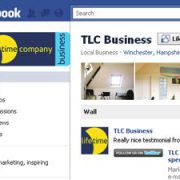Fine-tune your email marketing
 Modern marketing requires the use of a balanced blend of marketing channels, all working in harmony for the common good – to grow your business.
Modern marketing requires the use of a balanced blend of marketing channels, all working in harmony for the common good – to grow your business.
One channel that many small businesses mistakenly overlook is email, assuming customers view email marketing as spam or that it’s too easy for customers to unsubscribe or simply delete messages.
However, email is alive, kicking and effective. Thanks to the rise in technology and smart phones, consumers are connected to their inbox 24/7, reading emails with the same immediacy as they do text messages. Businesses are keen to get more bang for their buck and email marketing is certainly a platform more businesses should be considering when engaging with potential customers. Not only is it relatively low cost compared to comparable channels, but it is also incredibly generous about giving your business a wealth of marketing information off the back of a campaign, vital for giving you insights into your target audience and the ROI of campaigns.
Like any marketing activity, a business should plan their approach; simply pressing ‘send’ in Outlook isn’t enough. To get more mileage from your marketing campaigns, adopt these strategies to fine-tune the effectiveness of your emails:
Look beyond Outlook:
There are various tools and software out there that can help you create effective and engaging emails, test and send them, then manage and track the responses without any technical skills needed. Mail Chimp is one of a number of easy to use email marketing systems out there for businesses. Others include:
Virtually all will allow you to import your own HTML design or edit one of their existing templates to reflect your brand. Mail Chimp has the advantage that it is free if you have fewer than 2000 email subscribers and send emails no more than one a month. The software also helps you manage your subscriber lists, track campaign performance and sync your email marketing across social networks like Twitter, Facebook and LinkedIn.
Before you send your emails think about the following:
1. Segment your database into groups, for example, prospects, clients, past clients etc. Email software allows you to send personalised messages with custom offers. You could even send an email to one segment of your list by sorting on gender, role, post code or industry.
2. If you’re sending a newsletter, think about incorporating links that drive back readers to your website, where they can access the article in full. Not only does this get recipients on your website, where they can learn more about your business, but by reviewing your email statistics, it also provides you with vital information about specific areas of interest for database member. This information can be used to target marketing campaigns more accurately.
3. Make sure you test your emails. HTML designs can appear differently in different email clients. Likewise, something you may consider as eye catching, could be difficult for contacts to actually read. Most email systems will allow split testing, which is a great tool to use to identify the most effective subject line or content. If you want to increase open rates, test your subject lines. If it is your click-throughs you are looking to boost, then test design and content variations.
Your campaign doesn’t stop there – Review your performance:
After sending out your email messages, your next task is to measure the effectiveness of your campaign. Measuring the response rates will help you determine the kind of articles and services your readers want.
How do you know if your campaign is effective? The first indicator is your open rate, the number of people who actually opened your email. If you use an email marketing function like Mail Chimp, you will be able to access the full list of contacts who engaged with your campaign.
Your click-through rate is the other important indicator. Click-through rates measures the percentage of people who were sent the email that actively clicked on a link with the text. The more clicks the better.
You will also need to keep track of your unsubscribe rate. If the number of contacts requesting to be removed from your list increases, you need to re-evaluate your email campaigns. Are people unsubscribing because you are bombarding them with emails too frequently? Is the email message simply too long, or are your offerings lacking in appeal?
If planned and implemented properly, email marketing provides businesses with the opportunity to engage with a large audience in a short space of time. Not only does it offer your business a cost-effective marketing tool, it also provides you with vital information to help you integrate other forms of marketing into your mix……How about using telemarketing to follow up the contacts who clicked on a link within your email?









Leave a Reply
Want to join the discussion?Feel free to contribute!